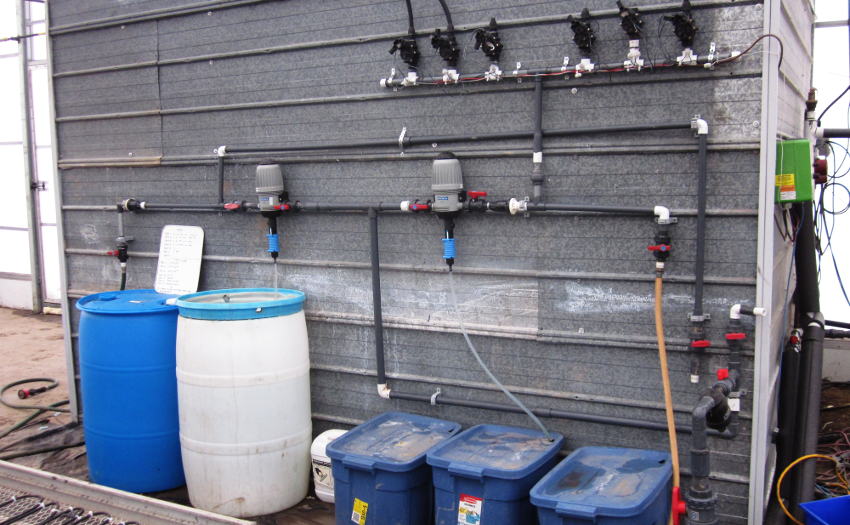Think growing plants is easy? Think again. Growing good plants is a multi-discipled task that needs far more knowledge that you may expect.
A lot of aspects of growing plants get reduced to overly-simplified concepts. That over-simplification can often lead to problem. Now at home and in the garden, it's really not something you need to worry about too much since Mother Nature is good a balancing everything out for you without you really knowing what's happening. But when you grow thousands of plants in a greenhouse environment, it becomes a completely different story.
Our first run-in with chemistry lessons involved fertilizer. Fertilizer has been simplified down to three numbers on the package. N-P-K, Nitrogen, Phosphorous, and Potassium. Those are what we call the macro nutrients since it's what plants use the most of. But there are all kinds of micro-nutrients that plants get from the soil that we really don't realize. Calcium, Magnesium, Copper, Iron, Boron, Sulphur, and ever Molybdenum are all essential nutrients a plant needs but in very small quantities. Imagine N-P-K fertilizer as your dinner, but the micro-nutrients as your multi-vitamins. If your dinner is perfect, it happens to contain all the vitamins you need, but in some scenarios you need that extra little top-up.
At Richmond Nursery we root all our own cuttings. Cuttings are interesting since they have no roots, but they still need food, but more importantly, they need a big dose of proper multi-vitamins to root best. Without roots, they need these vitamins in the water. So where does the chemistry come into play? Well, micronutrients don't always mix all that well. Sulphur is an element that's very important to the plant in order to root. Calcium is equally important since it's used to build cell walls. But if you mix calcium and sulphur in water, they like to join up into calcium sulphate and precipitate to the bottom of the tank where the plants can't get it. So with all good intentions of giving plants the extra vitamin boost they need, you can very well starve them with your good intentions. How did we solve the issue? We simply created a series of four different micro-nutrient mixes that the plant needs and each day the plant gets one mix. In each mix, the contents are adjusted according to potential chemical reactions that could happen so everything dissolves properly and the plant gets what it needs.
Chemistry lesson #2 learned with hydrangeas. Hydrangeas are know as nature's pH meter. Low pH creates blue flowers, higher pH creates pink flowers (it does still depend on the hydrangea variety, though). Unfortunately, it's not quite that simple. As it turns out, the pH isn't technically what makes a hydrangea blue. "What?" you say? Yup, pH is only a factor of hydrangeas being blue, but it's not actually what creates the blue. Aluminium is actually what makes the blue happen. When the pH is low, the aluminium forms ions in the soil that can be absorbed by the plant and settle in the flower area to create the blue. At higher pH levels, the aluminium creates bonds with other elements making it immobile and unavailable to the plant. Since aluminium is one of the most common elements on the planet, there's typically enough of it around that the pH becomes the factor to make the blue.
So here we sit in the greenhouse with Easter around the corner with a crop of hydrangeas that are "blurple" - a term coined by hydrangea growers when a blue hydrangea becomes mauve or purple. The pH is the soil is around 4.0 and normally a pH of 5.0-5.0 will create blue. They were given ample doses of aluminium sulphate (since there's little to no natural aluminium in growing mixes) so the aluminium is there. They were fed with low phosphorous food, since phosphorous can also bind the aluminium and keep it away from the plant. High nitrates can bind aluminium too, but they were fed with low nitrates. But they're still blurple.
Chemistry. A mystery reaction in the pot. Still not solved. Something you may not expect to be a necessity growing plants, but it is, and every year we learn more as we try new things. And we have the most lovely blurple hydrangeas this year. Maybe next year, we can make them blue again....

